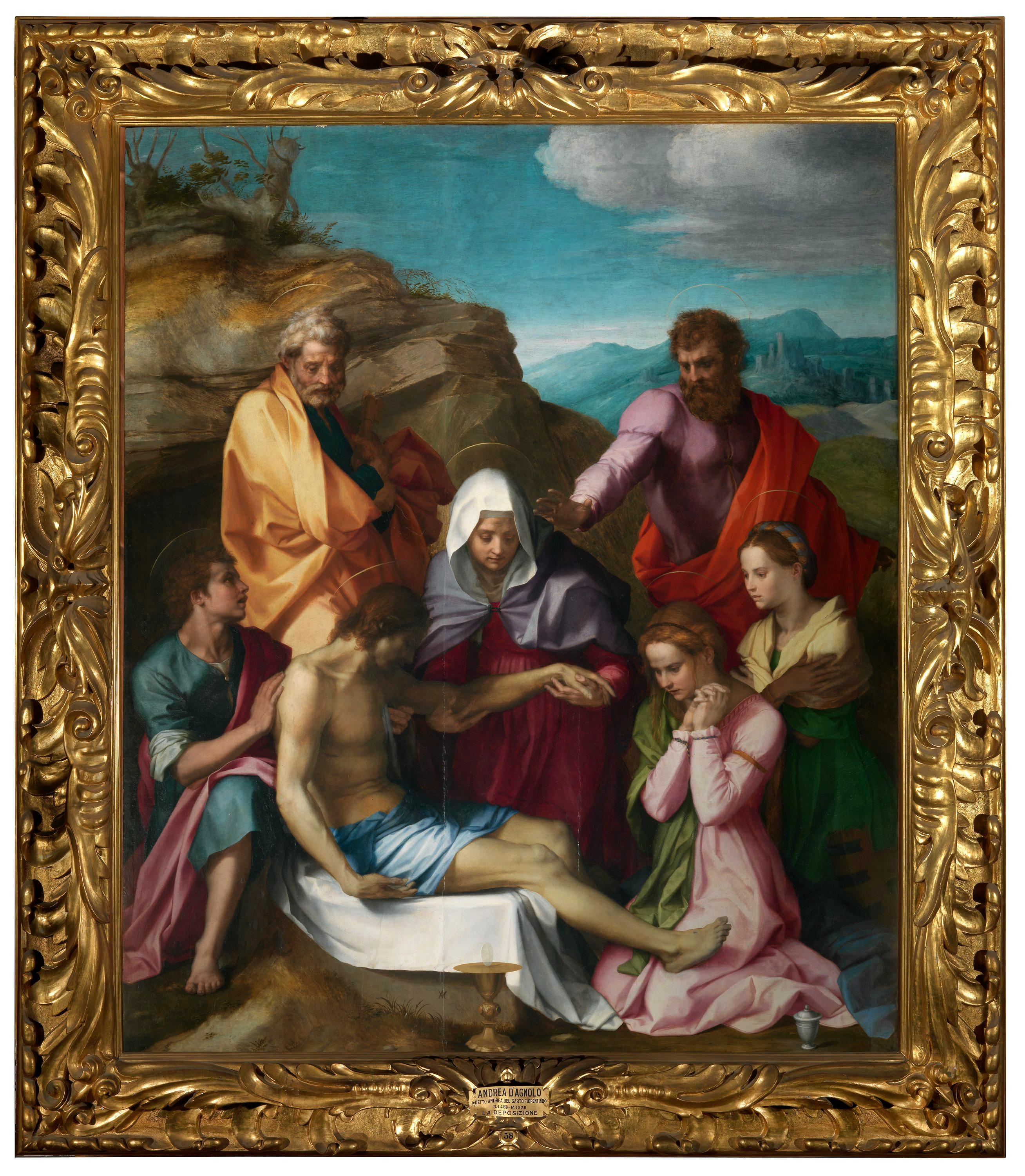Deposition (Luco Altarpiece)
Andrea del Sarto (Andrea d'Agnolo, Florence 1486-1530)
This Deposition is one of the most representative works in the Palatine Gallery. Its commission dates back to the early 1520s, when Andrea had retired to Mugello to escape the plague in Florence and where he was hired by Caterina di Tedaldo della Casa, abbess of the powerful Camaldolese monastery of Luco, near Borgo San Lorenzo. The altarpiece became an object of interest for the Medici family as early as the first half of the 17th century: Cardinal Carlo, brother of Grand Duke Cosimo II, unsuccessfully tried to convince the nuns to hand it over. A century later, however, Grand Duke Peter Leopold of Lorraine acquired it for the Uffizi Tribune, having a copy made by Sante Pacini put in its place. In 1795, the panel was moved to the Palatine Gallery, exchanging places with the Madonna of the Harpies, by the same author (Inv. 1890 no. 1577).
Seven figures gather in front of the rough rock tomb, outlined against the very clear sky. Mary, in the centre, delicately holds the lifeless body of her son just taken down from the cross. On her right in the foreground, Magdalene has her hands together, bringing them next to her face, and behind her, Saint Catherine of Alexandria (the client's namesake) clasps her arms to her chest: both astonished, as if paralysed by a torment that has not yet materialised into tears. On the opposite side, Saint Joseph of Arimathea, while supporting Jesus, is attracted by the gesture of Saint Paul who is about to place his hand on Mary's shoulder, as a sign of comfort. Saint Peter, (to whom the church in Luco is named along with St Paul) instead wraps himself in his yellow cloak and silently observes the livid body of the man and teacher he had rejected out of cowardice only a few days before. In the very foreground stands the chalice with the paten with a raised host, a symbol of the Eucharistic celebration derived from the sacrifice of Jesus: on the small white disc the silhouette of the Crucifix can be seen, the body of Christ that faithfuls receive during communion.
The protagonists are arranged on two diagonals that intersect at the figure of Mary, striking the perfect balance in terms of space. This highly sought after balance is enriched both by the choice of intense colours, combined or juxtaposed, and by the continuity of the movements of each character, so the spectator's gaze flows smoothly from one side to the other without being interrupted. Although the model of this Pietà depends in part on Fra Bartolomeo's model for the nuns of San Gallo (also currenttly in the Palatine Gallery, Inv. Palatina 1912 n. 64), Andrea achieves a different result in terms of spatial setting and emotional depth. There are no exaggerated or blatant expressions in the painting: rather, it is the representation of an inner pain so great that it remains embedded in the soul, made perceptible through slow gestures, pauses and slight variations in the sentimental range of faces. In the sculptural evidence of the drapery and the nude is the whole study Andrea had conducted on Michelangelo, and the reflection of the finest works of his friend Jacopo Sansovino, whose models he had used more than once. It is precisely because of the supreme balance and clarity of his painting, which Vasari described as 'faultless', that Andrea was looked up to as an example by later Florentine generations until the mid 17th century.
A.Cecchi in I dipinti della Galleria Palatina e degli Appartamenti Reali, Le scuole dell’Italia Centrale 1450- 1530 , a cura di S.Padovani, Firenze 2014 pp. 28-33 (con bibliografia precedente).
